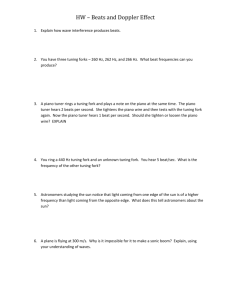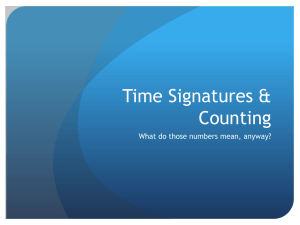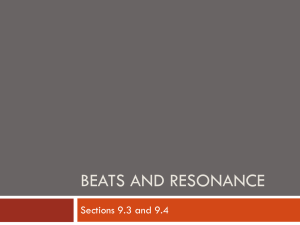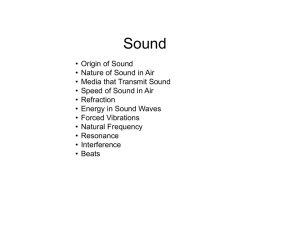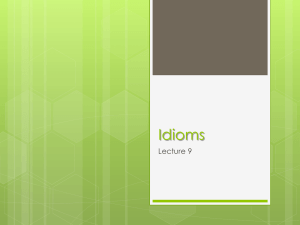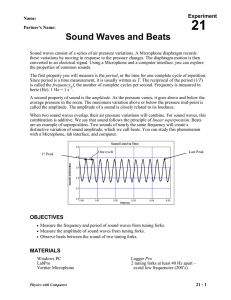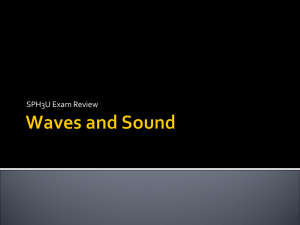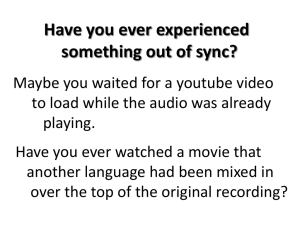9a – Beat Frequency
advertisement
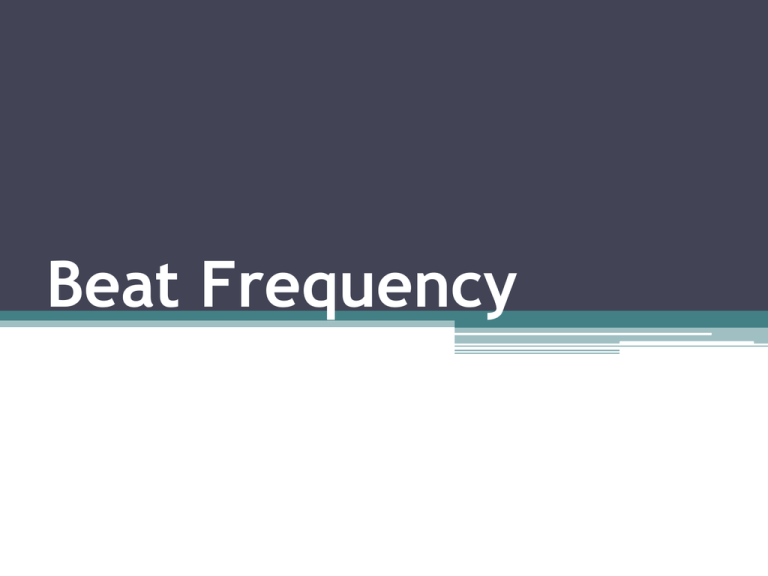
Beat Frequency Tuning Fork Demos •Two identical tuning forks •Two non-identical tuning forks The Interference Pattern One Beat Beat • A Beat is created by interference between two nearly identical sound waves • Beat – a periodic change in sound intensity • one beat is from loud to soft and back to loud (constructive to destructive and back to constructive interference) How a Beat is produced • when a rarefaction from one fork coincides with a compression from the other fork you get destructive interference and soft sound • when a rarefaction meets a rarefactions (or 2 compressions) you get constructive interference and louder sound • Beat Frequency – the number of beats heard per second in Hertz Beat frequency = number of beats Total time • Beat frequency is also the difference between the frequencies of the two sources Beat Frequency = Higher freq. – lower freq. = f2 - f1 Sample Problem A piano key with a frequency of 266 Hz is hit at the same time as a tuning fork. Seven beats are heard in 2.5 s. What are the possible frequencies of the tuning fork? Questions 1. 2. 3. 4. Explain how beats are created. Refer to the principle of superposition. You are tuning a guitar by comparing the sound produced by the string with the sound produced by a standard tuning fork. You notice a beat frequency of 5 Hz when both sounds are present. As you tighten the guitar string, the beat frequency rises steadily to 8 Hz. In order to tune the string exactly to the tuning fork, should you continue to tighten the string or loosen the string? Explain your answer. An airplane mechanic notices that the sound from an aircraft with two engines varies rapidly in loudness when both engines are running. What could be causing this variation from loud to soft? The two waveforms in Figure 5 have the same amplitude but different frequencies. They are interfering with each other. Copy the two waveforms into your notebook, and draw the resulting beat pattern. Mark the points of constructive interference and destructive interference.
